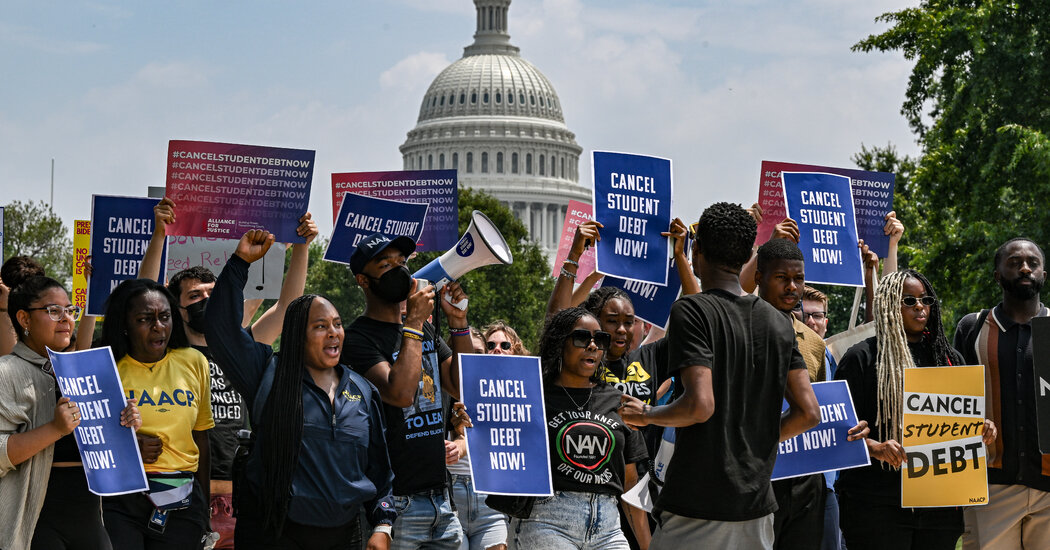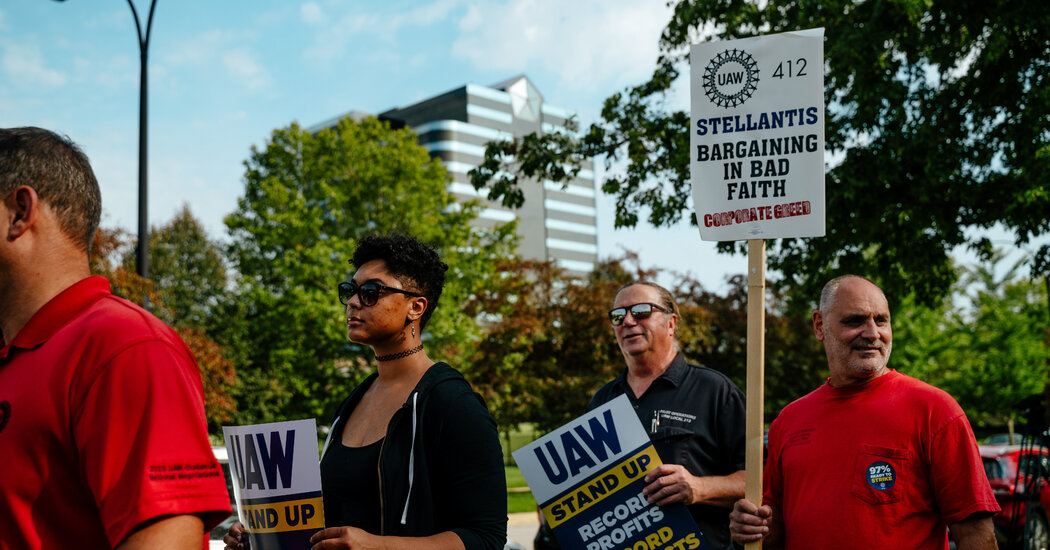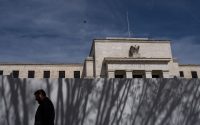Fed Holds Interest Rates Steady and Pledges to Proceed Carefully
The Federal Reserve left interest rates unchanged on Wednesday while leaving the door open to a future increase, a cautious stance at a time when rapid inflation is retreating but is not yet vanquished.
Rates have been on hold in a range of 5.25 to 5.5 percent since July, up from near-zero as recently as March 2022. Policymakers think that borrowing costs are now high enough to weigh on economic growth if they are kept at this level over time.
By cooling demand, the Fed is hoping to prod companies to raise prices less quickly. While the economy has held up so far — growth was unusually strong this summer — inflation has come down since 2022. Overall price increases decelerated to 3.4 percent as of September, down from above 7 percent at their peak.
Fed policymakers are now trying to wrestle inflation the rest of the way back to 2 percent. The combination of economic resilience and moderating inflation has given officials hope that they might be able to pull that off, slowing the economy gradually and relatively painlessly in a rare “soft landing.” But at the same time, continued economic momentum is forcing the Fed to question whether it has done enough to weigh on growth and crush price increases.
The major question facing Fed officials is whether they will need to make one final rate increase in the coming months, a possibility they left alive on Wednesday.
“The full effects of our tightening have yet to be felt,” Jerome H. Powell, the Fed chair, said at a news conference after the decision. “Given how far we have come, along with the uncertainties and risks that we face, the committee is proceeding carefully.”
Mr. Powell said that officials would make decisions about the extent of additional policy firming that might be needed — and how long rates will need to stay high — based on economic data and how various risks to the outlook shape up.
At the Fed’s previous meeting, in September, policymakers had forecast that one more quarter-point increase in rates would likely be appropriate before the end of 2023. But officials did not release updated economic projections on Wednesday — the next set is scheduled to come after the Fed’s Dec. 12-13 meeting — and conditions have changed since then.
That is because longer-term interest rates in markets have jumped higher. While the Fed sets short-term borrowing costs, longer-term rates adjust at more of a delay and for a variety of reasons. Their recent rise has made everything from mortgages to business debt more expensive, which might help to cool the economy. The change might make it less necessary for Fed officials to raise rates further.
“Tighter financial and credit conditions for households and businesses are likely to weigh on economic activity, hiring, and inflation,” the Fed said in its statement Wednesday, newly pointing to financial conditions as a restraint on growth.
“It’s their way of saying that higher interest rates matter,” Gennadiy Goldberg, a rates strategist at TD Securities, said of the line. “Interest rates are doing some of the Fed’s work for them.”
Mr. Powell made it clear that the Fed was closely watching higher market interest rates — particularly to see whether the jump was sustained, and to what extent it trickles through to squeeze consumers via mortgage rates and other borrowing costs.
But Mr. Powell said that the Fed’s staff economists were not predicting an imminent recession, which suggests that they do not see the higher borrowing costs hurting the economy too severely.
And he said that policymakers were still focused on whether interest rates were high enough to ensure that inflation would cool fully, given recent evidence of continued economic strength.
“We are not confident yet that we have achieved such a stance,” Mr. Powell said.
While the Fed’s moves have tamped down some parts of the economy, like the housing market, the labor market continues to chug along. Hiring has slowed, but it is still quicker than before the pandemic. Wage gains have cooled, but are also faster than pre-2020.
As Americans win jobs and raises, they have continued to open their wallets. Spending climbed faster than economists expected in September, and growth overall has been much faster than what most forecasters would have expected a year and half into the Fed’s campaign to cool it.
Fed officials noted in their statement on Wednesday that the economy has been expanding at a “strong” pace, an upgrade from “solid” previously.
That strength could become a problem for central bankers, should it persist. If consumers remain ravenous for goods and services, companies may continue raising their prices, making it more difficult to stamp out what is left of rapid inflation. That is why policymakers are carefully watching the economy’s momentum as they consider their future policy.
At the same time, Fed officials do not want to slam on the brakes too hard, doing so much that they plunge the economy into a recession when one was not necessary. Policy changes often act with a lag. It can take months for the cumulative effects of interest rate increases to fully bite.
“Everyone has been very gratified to see that we’ve been able to achieve pretty significant progress on inflation without seeing the kind of increase in unemployment” that is typical with interest rate increases, Mr. Powell said.
But, he said, the Fed still thinks a slowdown in the job market and overall growth are likely to be necessary.
Inflation has come down as pandemic supply chain disruptions have healed and as a new supply of workers has helped to bring the labor market back into balance, he said. But those factors may not be enough to get inflation all the way back to normal.
“What we do with demand is still going to be important,” he said, later adding that “slowing down is giving us, I think, a better sense of how much more we need to do if we need to do more.”


